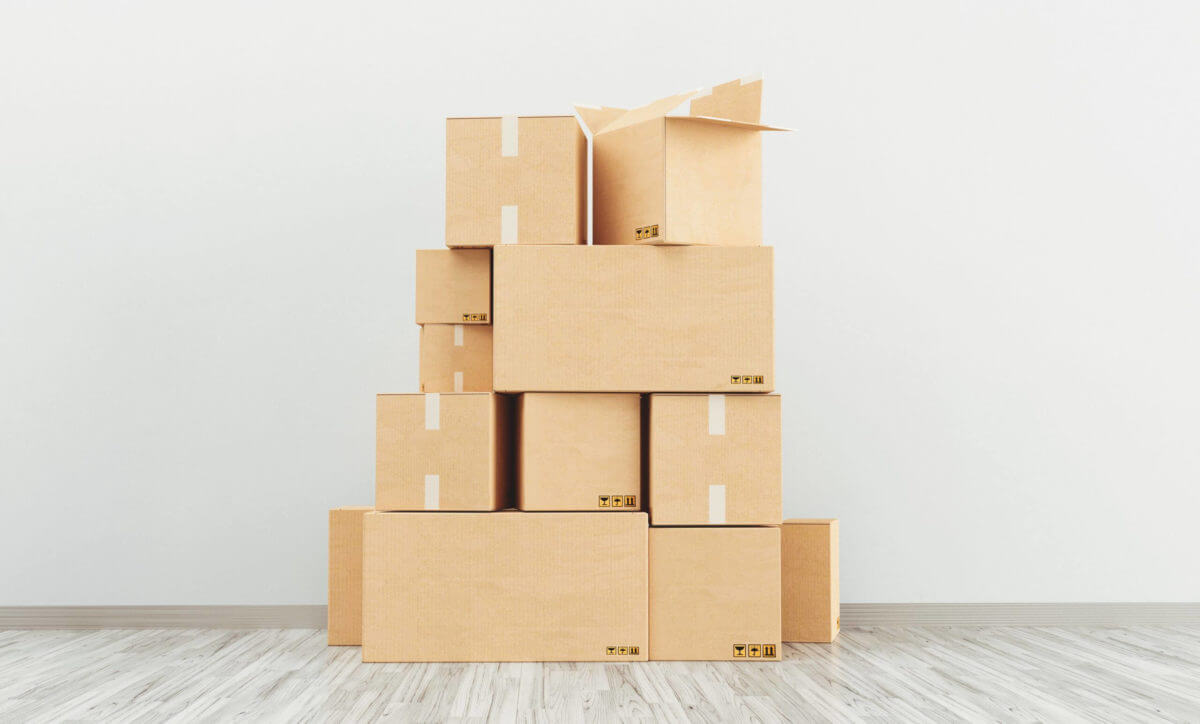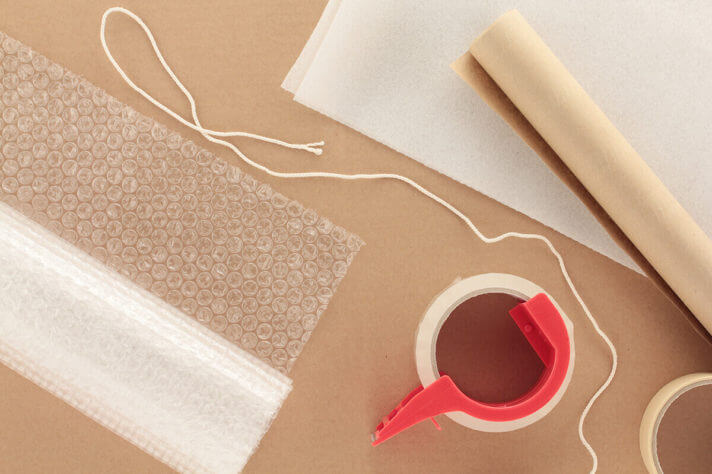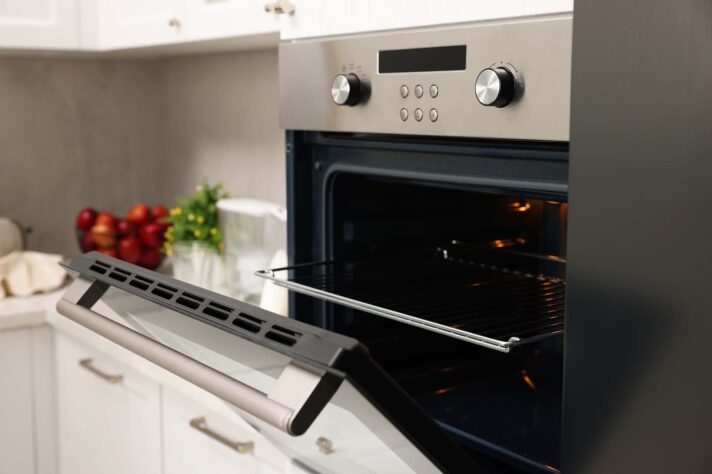Everyone who has ever gone through the packing and relocation process will agree that, while kitchenware is the most demanding, electronics are among the most sensitive items to pack. If you’re not sure how to pack electronics for moving, follow our tips and you will be able to pack your most valuable belongings without a hassle.
Boxing up delicate objects takes time
Use Original Boxes
With original packages and high-quality packing material, it’s almost impossible to make a common moving mistake while packing computers and other gadgets. It can be difficult to find a proper-sized box for larger items or those with additional accessories. So snoop around your home and find as many original packages as possible. Alternatively, you could ask electronic stores if they have any leftover boxes.
Packing Materials
In case you can’t find the original package, do your best to obtain different packing supplies:
- Sturdy boxes
- Packing paper
- Anti-static bubble cover bags
- Duct tape
- Scissors
- Markers and/or stickers
- Resealable bags
- Twist ties
If you want to reduce moving expenses try obtaining some of these supplies for free.
How to Pack Electronics for Moving – General Tips for Staying Safe
Besides placing your items in the original packages and using the right supplies, there are other things to consider when relocating to a new state to ensure the safety of your devices:
- Use crumpled packing paper or bubble wrap to fill empty spaces inside the boxes and prevent your items from bouncing around. Additionally, you can also use items such as towels and clothes.
- Cover large items in bubble wrap. In this case, you should use as much cushioning material as possible: bubble wrap, towels, cardboard, plastic sheeting, or covering. This is especially important when taking care of TVs and computer screens.
- Avoid using newspaper, since it can easily bleed ink and stain your belongings.
- Tape over the CD slot when packing your computer, so it doesn’t eject while in a box.
Take Pictures of the Items
Before taking apart cords and cables, you should take photos with your mobile phone. This will come in handy when the time comes to set up all devices again at your new home, as you won’t have to waste time figuring out which cable belongs to which device.
Assemble the Accessories
Wires and cables should be tied with twist ties and placed in sealable bags since this is the safest way to store them. Label the bags and put them together with their related devices. Don’t forget to remove portable storage devices, external hard drives, and cartridges and toners from printers. Sealable bags are perfect for them, too.
Consider Color Stickers for Electronic Cords
Before pulling out any cables, you should mark each one with a sticker. Then, do the same thing with the socket where the cable is plugged in. These stickers can be color-coded or numbered, whichever is easier for you.
Take pictures beforehand if you plan on reassembling objects on your own
Pack Your Electronics
Safe packing material is the most profitable investment. With corrugated cartons, your items will be secure and protected, since they are comprised of three layers of paper. They are cost-effective and are designed to sustain a wide variety of weights and have water-resistant features. They are available in different sizes and thicknesses.
Pack in Bubble Wrap – Protect Your Stuff
Regular bubble wrap is not good enough for your devices. Anti-static bubble cover bags are a must for any electronic item. They are not only useful for preventing damage in transit, but they also protect electronic equipment from static. These bags are made of plastic polyethylene terephthalate (PET) and come in different colors – silver, pink or black.
It is a well-known fact that a static charge can damage electronics if you don’t use proper materials. You should cover each device separately to prevent rubbing and damage. After placing your equipment in a box, fill the gaps with packing peanuts. This additional protection is crucial during transport.
Use high quality supplies when boxing up
Be Cautious with Valuable Items
Some of the most expensive items should be placed in boxes that are not clearly labeled. This will reduce the chance of theft. If using a storage unit is on your relocating to another state checklist, place these boxes in the back of the unit. Consider getting moving insurance for them and creating a photo inventory once you donate unwanted items. Also, be careful when loading heavier objects. Make sure you don’t place them on the top of smaller and expensive devices since they can be crushed by the weight.
An Additional Safety Step Related to the Temperature in Storage
After the first day of the move, your electronics should be stored in climate-controlled storage units, especially if you decide to move in the summer or winter – electronic devices are sensitive to extreme temperatures. Storage spaces must maintain a constant level of temperature and humidity, regardless of outside factors. Here is what you should know before storing electronic items:
- Remove all batteries. If they stay in, they can explode, leak acid, and damage the inside of a device. Wrap them in a sheet of paper, separate from the device, tape up the bundles, and label them.
- The bubble cover is not desirable in this case. If used for an extended period, bubble wrap will retain moisture and cause condensation. It is better to use paper wrapping, blankets, or even beach towels.
- Use original materials for storing. This is the most fool-proof method for storage units.
- Don’t store anything directly on the floor where it will be exposed to moisture.
What About Extra Protection when Moving?
If you are only using cross-country moving services, and not storing your items in a unit, here are some additional packing tips and tricks for extra protection during shipping:
- After boxing the devices, close the top and shake the package gently. If you can feel any movement, open it, and add more foam peanuts.
- Close the package and tape it vertically and horizontally.
- Put a smaller package inside a larger cardboard box. Simply put foam peanuts on the bottom of the larger one and on top of the one inside.
- Close and tape it.
- Don’t forget to label packages as fragile and write down what’s exactly inside if you want to make unpacking easier.
Before putting everything in boxes go over extra protection steps
Hire Cross Country Moving Company and Relocate Without a Hitch
If you’re moving alone to another state and you’re too busy with checking the safety of your future neighborhood and house-hunting or you’re scouting for jobs so you need help, consider handing it over to professionals. With the right moving company, the most sensitive items such as electronics or maybe glassware will be a piece of cake to pack and transport and it will reduce your moving stress and anxiety about moving out.
Highly recommended professional movers can help you with your no only with electronics but with packing clothes, boxing up furniture and other belongings, even if you’re moving into a smaller home and you don’t have loads of stuff. If you’re thinking about transporting your car across the country, know that they can also provide you with auto transport services and explain to you how does car shipping works, which can be convenient if you’re relocating to the suburbs.
It’s always better to avoid the cheapest way to move out of state when it comes to sensitive things and to leave everything to professionals, all you have to do is to pick the best time of the year to move. Plan your moving budget and give your movers a call to get more relocation-related information such as what would be the cheapest time of the year to relocate or some moving day tips.











